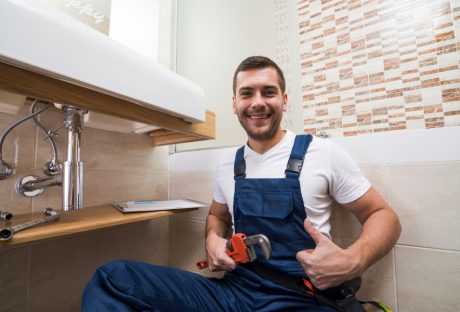Living in a small space requires you to be innovative and well equipped to ensure that you have a comfortable place to stay. There are a lot of things you can do to make this happen. However, to ensure that you make the most of your space, you need to avoid adding clutter to your house.
If you are going to add anything to your space, ensure that you get some items out of your house that you don’t need. This is essential given that if you were to clutter your space, your goal to improve your space wouldn’t be realized. Once you have your system for keeping clutter out, here are a few things to consider for improving your living conditions. They include:
Invest in the Right Furniture:
Furniture is one of the most important home additions especially when it comes to improving your living conditions. When working with a small space, your furniture choices are very crucial. You need to consider how they’ll fit into your space. Since this is a small living space, consider going with medium or small-sized furniture that is not too bulky. This will help you ensure that you use your space well without taking up too much space. Additionally, you should consider using alternative seating options like floor pillows and ottoman. This will also help you improve your living conditions.
Tweak Your Lighting:

When it comes to small spaces, you need to ensure that you invest in bright lighting options. These lighting options will help illuminate your space and make it feel bigger than it is. Adding light will incredibly improve your living conditions and allow you to enjoy your small space. This can be achieved by adding more or brighter light Fixtures. The best part about this is that you have a lot of options to consider. You could invest in led lights that you can dim or make brighter when you need to.
Add Mirrors:
Mirrors are important and can be used in different parts of the house to add character to your space. When working with small spaces mirrors help make your room look bigger and enhance your living conditions. The best way to ensure that you get the best out of this is by investing in larger mirrors. These mirrors will work great for your living room and bedroom.
Diversify Your Storage Options:
When it comes to small spaces, storage is one of the things that prove to be quite tricky. Without enough storage, you find that your space becomes cluttered and doesn’t result in better living conditions. This is why you need to reconsider your storage options. Make use of your high ceilings and the empty spaces on your walls. Install cabinets and shelves that will help you take advantage of this space and get some extra storage space. This will significantly improve your living conditions while in the small spaces.
Go with Light Wall Colors:
There are different ways to improve your wall spaces and make your room more lively. One of them is incorporating warm wall colors on your wall. This is a great way to ensure that you improve your living conditions. You could consider going with pure white on your walls or warmer colors. With this, you can be sure that your small space can accommodate you.
Improve Your Home’s Air Quality:
Air quality in the home is one of the things that gets forgotten when working on improving your living conditions. Given that you are working with a small space, you need to ensure that you pay attention to this. You don’t have as much space for air circulation as you would in a larger space. To make working with better air quality in your space, consider using air purifiers. They will help you ensure that your space has amazing air circulation throughout. If you’re in the market for quality air purifiers, check out Hisoair.com to get the best deals.
Add Decor and Greenery:

Adding decor to any space is a great way to add character and improve the overall conditions of the space. With this in mind, you should consider investing in decor items. Decor items will vary depending on your personal preference and the style you are going for in your home. Additionally, adding greenery is also a good way to ensure that you improve the conditions in your home. Invest in indoor plants that are either real or faux depending on the commitment you are willing to put in. Remember real plants will require regular weeding and watering while faux plants are not as demanding.
Incorporate Some Texture:
When adding texture into your home, you have different options to consider. You have the option of going with area rugs, pillow covers, and throw blankets to achieve this. Adding texture into your home will give it character and improve your small space significantly. Additionally, consider adding some patterns as well to add to your space.
Multi-Functional Furniture for Maximum Efficiency
When you’re working with limited space, multi-functional furniture is a must. Get a sofa bed, and you’ll have somewhere comfy to sit during the day that also doubles as a guest (or your) bed at night!
The best two for one when it comes to furniture?
Or maybe an ottoman with storage so you can hide blankets, books, or anything else you want out of sight. Tables and desks that fold away or extend only when needed are another great way to save some space.
Think About Room Dividers
Does your living room feel like it’s in your bedroom or maybe your kitchen? Or does it feel like a mixture of all three with too much hoarded furniture?
This is why I ordered room dividers!
In such a small space, I needed one room to feel separate. So, if you have a bookshelf, you can even find a room divider somewhere. We justify the use of whatever type of solution to the problem that can make certain places within the studio apartment feel not as squished.
Whether it is a proper divider, long curtains, or just a bookshelf, whatever feels better!
Stay Organized with Vertical Solutions
How much wall space do you have?
If you’re not using your walls, you could be missing out on some great storage opportunities. Floating shelves or hooks can keep things off of the floor and out of the way. Maybe your kitchen needs an easy storage fix. So, why not try some hanging shelves for spices or mugs?
Or, if your counter always seems to be cluttered in the bathroom, add shelves above your sink or toilet.
What room do you think this would work best in?
Utilizing wall space will save floor space and keep everything organized with a modern look.
Try these tiny home fixes and upgrades, and you’ll see that even the smallest dwelling can feel spacious, comfortable, and all yours.
You can Manage It!
Living in a small space can be a bit complicated given that you don’t have a lot of space to work with. However, this doesn’t mean that you should live in a cluttered space just because you live in a small space.
This is why you need to invest in additions that will help improve your living space. They will help you improve your living conditions and enjoy your small living space. Take your time to incorporate these aspects into your home with ease.
Read Also:






















